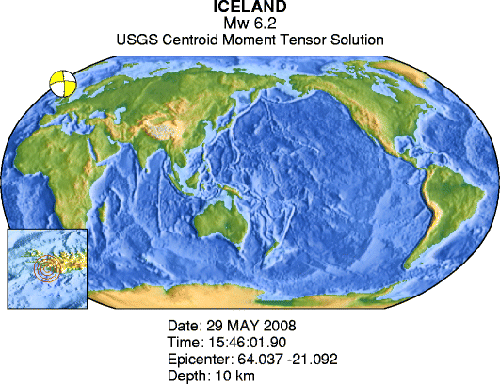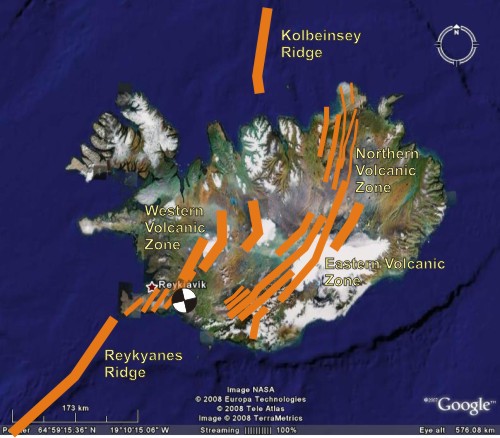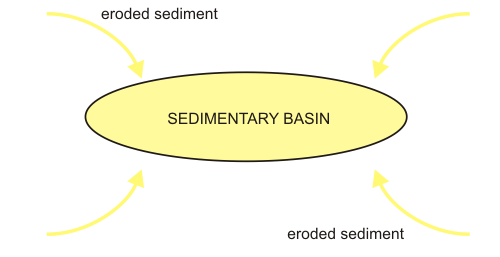As Steinn reported at the time, last Thursday Iceland was shaken by a magnitude 6.3 earthquake (Ole has more). Here’s the USGS moment tensor solution:

The pattern of first motions indicates a strike-slip earthquake, where the two sides of an almost vertical fault are moving past each other. This wasn’t actually what I was expecting when I clicked through to the USGS report. Iceland, after all, is basically just a particularly volcanic part of the Mid-Atlantic Ridge, which marks the extensional plate boundary between the North American and Eurasian plates. Western Iceland, which is on the North American plate, and eastern Iceland, which is part of the Eurasian plate, are moving away from each other at about the speed that your fingernails grow; as such, I was expecting to see an extensional earthquake mechanism. So why do we have such a large strike-slip earthquake occuring within a rift zone? The answer can be found by zooming in a bit on Iceland, to see exactly where the earthquake occurs:

Continue reading →







Nice plan for content warnings on Mastodon and the Fediverse. Now you need a Mastodon/Fediverse button on this blog.